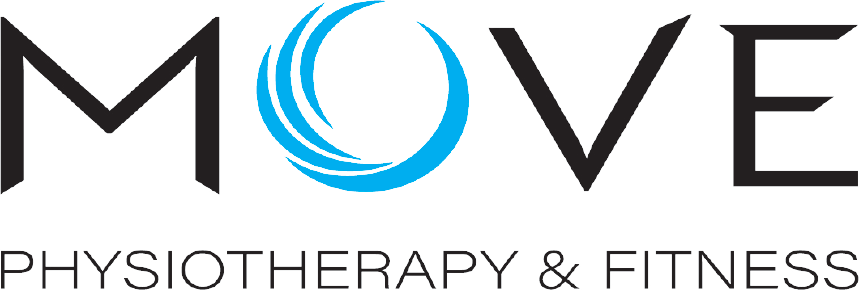Have You Suffered an ACL Injury?
At Move Physiotherapy, we know that an ACL injury isn’t just a setback—it’s a major challenge that impacts your sport, work, and daily life. Whether you’re an athlete striving to return to peak performance or someone looking to regain confidence in your knee, the right rehabilitation is critical.
Unfortunately, most ACL rehab is done poorly, with studies showing that non-elite athletes receive evidence-based rehabilitation only 5% of the time. This leads to longer recovery times, poor strength outcomes, and higher re-injury rates.
That’s where we do things differently. Our experienced physiotherapists have worked with AFL, NRL, Defence Force personnel, and top-tier athletes, delivering gold-standard ACL rehabilitation to ensure you return stronger than ever.
With state-of-the-art rehab facilities in Booragoon, East Fremantle, and Beeliar, we have everything needed for your recovery—barbells, kettlebells, plyometric training, and performance-based testing. Every program is tailored to your sport, lifestyle, and goals, ensuring a safe and confident return to activity.
The Move Physiotherapy Difference
At Move Physiotherapy, we know that ACL injuries are common in Australian sports like AFL and Netball, yet proper rehabilitation is often overlooked. Research shows that non-elite athletes receive evidence-based ACL rehab only 5% of the time. As a result, despite 94% of athletes expecting to return to competitive sport, only 40-55% actually do—and of those, just 10-20% pass return-to-sport testing.
This lack of structured rehab contributes to high re-injury rates, with 1 in 3 youth athletes suffering a second ACL injury after their initial recovery. However, research proves that quality rehabilitation significantly improves outcomes, with athletes who complete structured rehab and pass return-to-sport criteria being almost 8 times more likely to return to sport while also experiencing a 72% lower risk of future knee injuries.
At Move Physiotherapy, we are committed to setting a new standard for ACL rehabilitation. Our approach goes beyond basic recovery—we prepare you to return to sport stronger, more confident, and more resilient than before.
We follow a structured, evidence-based 5-stage rehabilitation process to ensure you receive the right interventions at the right time. This is outlined below. Based on the latest research, this criterion-based program ensures a gradual and safe progression back to high-level sport. Each stage has clear goals and exit criteria, ensuring your knee is physically prepared for the next challenge before advancing.
ACL rehab isn’t just about restoring knee function—it’s about rehabbing the whole athlete. Throughout your recovery, we integrate a comprehensive strength and conditioning program, keeping the rest of your body strong and preparing you for peak performance when you return to play.
Furthermore, rather than guessing when you’re ready, we measure everything. Using our force plates and video analysis technology, we objectively track your strength, power, and movement quality throughout every stage of rehab. This ensures that you meet key strength and performance benchmarks before progressing, that your knee is prepared for the physical demands of your sport, and that you return to play with confidence, knowing you have the physical tools to perform at your best.
Every ACL injury is different, which is why we design individualized rehab programs tailored to your sport, lifestyle, and goals. Whether you need sport-specific training, prefer supervised rehab sessions, or want a more independent program, we adapt your rehab experience to suit you. Our approach not only gets you back to competition but also builds long-term knee resilience, reducing the risk of future injuries.
ACL REHABILITATION PROTOCOL

Stage 1: Recovery From Surgery (If Applicable)
Your ACL operation is a traumatic event for your knee. Although at this stage, many athletes are rearing to commence their rehabilitation, it is best to let your knee settle for 1-2 weeks.
Your physiotherapist will set you simple range of movement exercises and muscle ‘setting’ exercises, however our primary aim is to allow the swelling to settle in your knee.

Stage 2: Regain Strength and Balance
In stage 2, we aim to rebuild strength in the muscles surrounding your knee, such as your quadriceps, gluteals and hamstring muscles. If you have undertaken a hamstring graft ACL replacement, regaining strength in your hamstrings is paramount in this stage.
We also aim to restore your balance. For example, most athletes between 15-30 years should be able to maintain single leg balance for 45 seconds and greater.

Stage 3: Running, Agility and Landing
Once you have passed the criteria of progression from stage 2, we can commence our running and agility drills.
At this stage, we examine your jumping and landing mechanics. For example, there is research that demonstrates that a quadriceps dominant jumping and landing style carries a greater risk of ACL injury compared with gluteal patterns of jumping.
We also progressively incorporate agility drills into your training, such as changes in direction, hopping and landing.

Stage 4: Sport Specific Training
At this stage, we will customise your ACL rehabilitation program to drills and exercises that are specific to your sport.
The demands of each sport vary considerably. For example, the requirements of playing netball and basketball are completely different to the demands of dancing!
At Move Physiotherapy we will work with you to ensure that you are confident and ready to return to sport and minimise the risk of re-injury.
